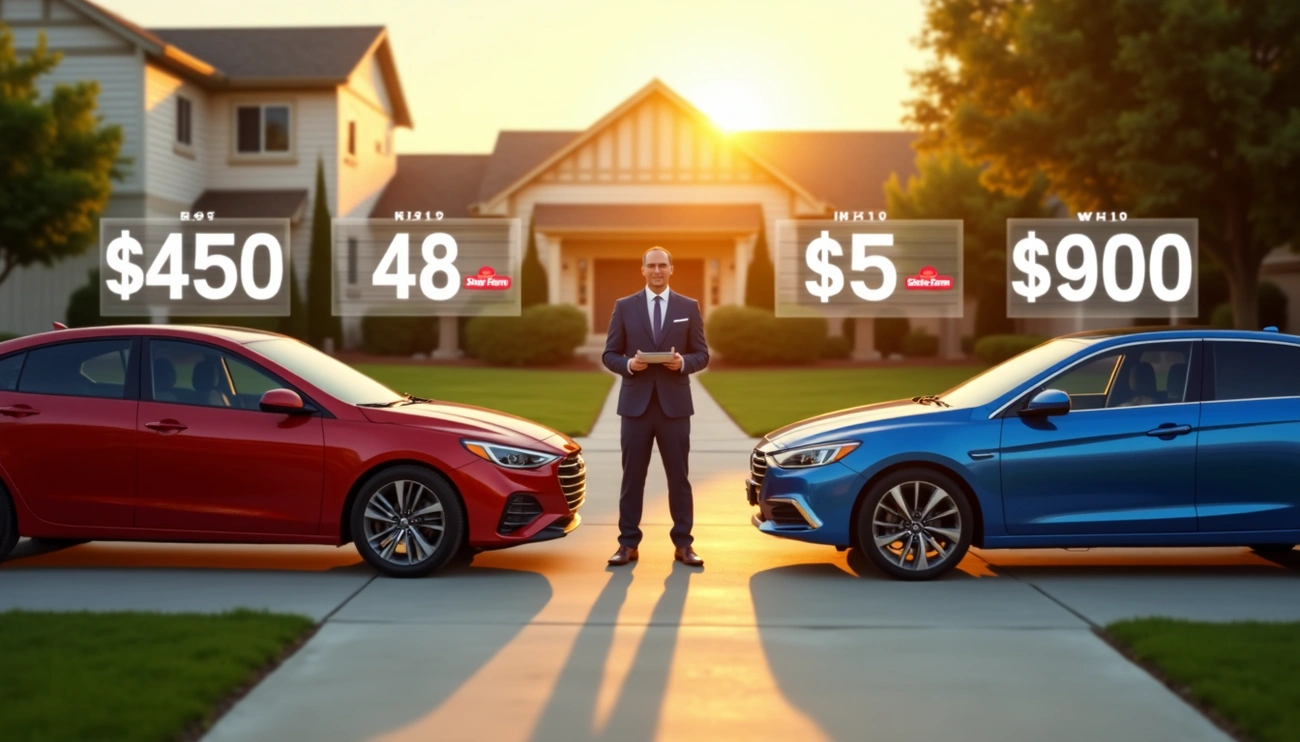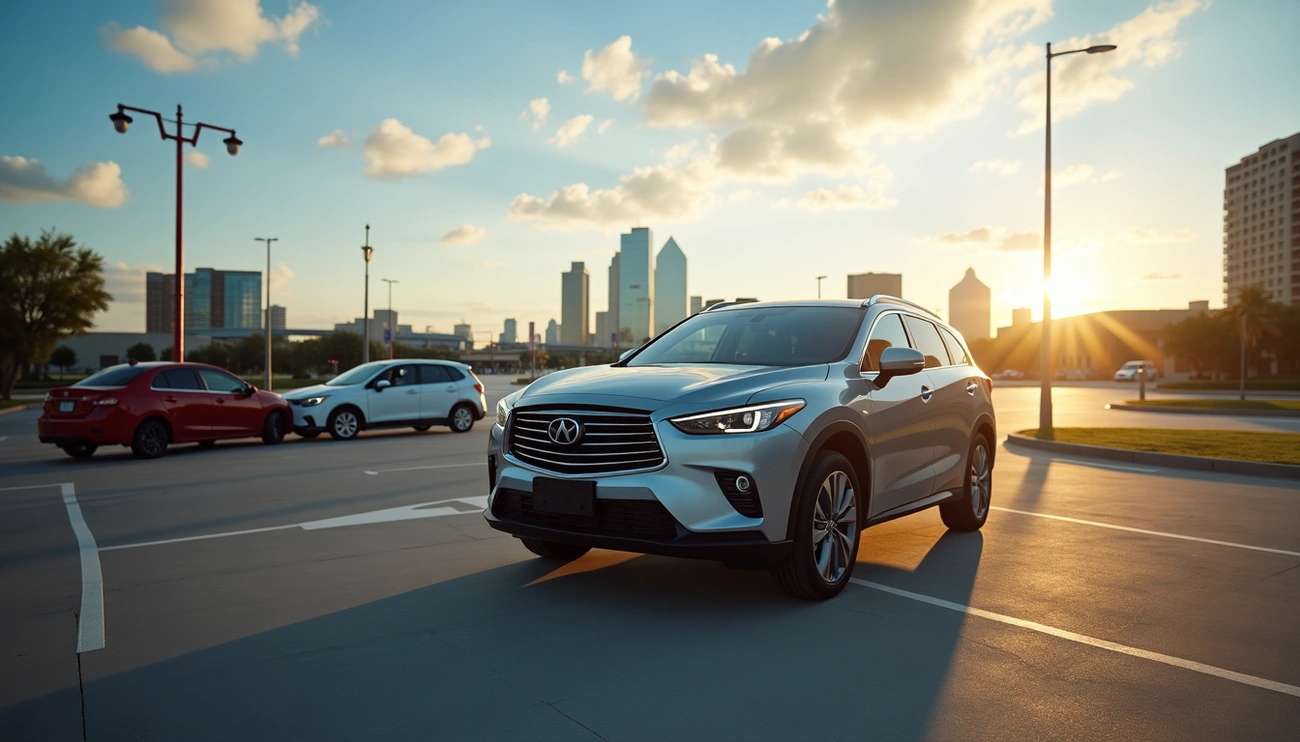Shopping for car insurance feels overwhelming — especially when you’re trying to figure out if Progressive insurance review claims about savings actually hold up. As the second-largest auto insurer in America with a 16.73% market share, Progressive certainly talks a big game about saving you money.
In fact, their average annual premium of $2,032 for full coverage sits close to the national average of $1,976. However, what most drivers don’t realize is that Progressive offers hidden discounts that could save you up to $793 by bundling home and auto policies. Additionally, their Snapshot program rewards good driving habits with an average savings of $231 annually — money many customers leave on the table.
I’ve analyzed Progressive’s rates, discounts, and coverage options to help you determine if they’re actually worth your consideration in 2025. If you’re wondering whether Progressive deserves its position among the best auto insurance companies — or if you’re simply curious about what separates them from competitors — I’ll break down everything you need to know without the complicated insurance jargon.
Progressive Insurance in 2025: What’s New and What’s Not
Progressive has evolved significantly since its founding in 1937, growing into a formidable insurance powerhouse that serves millions of Americans. As we examine the company’s current standing, several developments have shaped its trajectory in the insurance landscape.
Company Overview and Market Position
Progressive stands firmly as the nation’s third-largest auto insurance provider, trailing only behind State Farm and GEICO. With over 13 million policies in force, the company has built its reputation on competitive pricing and innovative digital tools that simplify the insurance process. Progressive offers a comprehensive range of insurance products beyond auto coverage, including homeowners, renters, motorcycle, boat, and commercial policies.
The company’s iconic mascot Flo has become synonymous with the brand since her debut in 2008, helping Progressive maintain strong brand recognition among consumers. Moreover, Progressive has strengthened its position through strategic partnerships and acquisitions, expanding its reach across various insurance segments.
One noteworthy aspect of Progressive’s market approach is its commitment to technology integration. The company has invested heavily in AI-powered tools and mobile applications, allowing customers to manage policies, file claims, and request roadside assistance without calling an agent. This digital-first approach has particularly appealed to younger drivers seeking convenient insurance solutions.
Recent Financial Performance and Growth
Progressive’s financial trajectory shows remarkable resilience despite economic fluctuations. The company reported net premiums written of $56.8 billion, representing a steady 4.3% growth compared to the previous year. This growth outpaces the industry average of 3.1%, demonstrating Progressive’s ability to expand its customer base effectively.
The insurer’s combined ratio—a key metric measuring profitability in the insurance industry—stands at an impressive 93.8%, meaning the company spends about 94 cents on claims and expenses for every premium dollar collected. This performance places Progressive among the most efficiently operated insurers in the market.
Despite rising claim costs across the industry due to increased repair expenses and more severe accidents, Progressive has maintained strong financial fundamentals. The company’s strategic focus on data analytics for pricing accuracy has helped maintain profitability while still offering competitive rates to consumers.
How Progressive Compares to Other Top Auto Insurers
When measured against other major auto insurance providers, Progressive demonstrates several distinctive strengths:
- Pricing Flexibility: Progressive’s average annual premium for full coverage ($2,032) sits near the national average, but their personalized pricing model often produces more favorable rates for good drivers compared to competitors like Allstate ($2,438) and Farmers ($2,285).
- Digital Experience: Progressive’s mobile app ranks among the top three insurance apps for user satisfaction, outperforming Liberty Mutual and Nationwide in functionality and ease of use.
- Quote Comparison Tool: Unlike many competitors, Progressive’s Name Your Price tool and rate comparison feature allow customers to view competitors’ rates alongside Progressive’s own offerings—a transparency approach that builds consumer trust.
Nevertheless, Progressive falls short in some areas compared to industry leaders. Their customer satisfaction ratings from J.D. Power place them slightly below USAA and State Farm, particularly regarding claims handling speed. Furthermore, while Progressive excels in auto insurance, their homeowners coverage receives more mixed reviews than specialized home insurers like American Family and Amici.
Overall, Progressive maintains a solid position as an innovator in the auto insurance space, though the company continues working to strengthen its standing in other insurance categories where it faces stiffer competition.
Progressive Auto Insurance Pricing: What You’ll Really Pay
When you check Progressive auto insurance pricing, you’ll notice rates vary dramatically based on who you are and where you live. Understanding these pricing factors helps explain why your quote might differ from national averages.
Average Annual Premiums by Driver Profile
Progressive’s pricing structure rewards certain driver profiles while charging others more for perceived risk. For the average driver with good credit and a clean record, Progressive charges approximately $2,032 annually for full coverage—slightly higher than the national average of $1,976.
Your individual rate, nonetheless, depends heavily on several key factors:
- Age: Drivers in their 40s and 50s typically receive Progressive’s best rates, paying about 15% less than the company average
- Credit Score: Those with excellent credit scores (above 800) enjoy rates approximately 20% lower than those with average credit
- Driving History: A single speeding ticket increases rates by roughly 10%, while a DUI can spike premiums by 65% or more
- Coverage Level: Jumping from minimum coverage to full coverage with Progressive increases costs by an average of 61%
The gap between minimum and full coverage with Progressive averages about $1,200 annually, making it worth considering exactly how much protection you need based on your vehicle’s value and personal assets.
State-by-State Rate Differences
Your location substantially impacts what you’ll pay for Progressive coverage. Michigan drivers face the steepest Progressive premiums, averaging $4,185 annually for full coverage—more than double what drivers pay in states like Maine ($1,623) and Vermont ($1,587).
Other notable state differences include:
- California: Progressive charges approximately $2,455 annually, about 21% higher than the national average
- Florida: Drivers pay roughly $3,124 per year, reflecting the state’s higher accident rates and natural disaster risks
- Ohio: As Progressive’s home state, rates run about $1,764 annually, nearly 13% below the national average
These variations stem from state-specific factors including local traffic laws, weather patterns, theft rates, and state insurance regulations. For instance, no-fault insurance states typically see higher Progressive premiums than at-fault states.
Teen and High-Risk Driver Pricing
Adding a teenage driver to your Progressive policy creates the most dramatic price increase you’ll face. A 16-year-old driver increases the family policy by approximately 152% on average.
Accordingly, a family paying $2,032 annually might see their premium jump to over $5,100 after adding a teen driver. However, Progressive offers several ways to mitigate these increases:
- The Good Student Discount reduces premiums by up to 10% for students maintaining at least a B average
- The Distant Student Discount provides savings when your college student attends school more than 100 miles from home without a vehicle
- The Snapshot program can benefit careful teen drivers, potentially reducing rates by an average of 15%
For high-risk drivers with previous accidents or violations, Progressive might not offer the market’s lowest rates but provides more accessibility than many competitors. A driver with a recent at-fault accident faces an average increase of 28% with Progressive, compared to industry averages closer to 40%.
Furthermore, while many insurers drop clients after multiple incidents, Progressive’s “accident forgiveness” and willingness to insure higher-risk drivers makes them an option worth considering—albeit at premium prices—for those struggling to find coverage elsewhere.
Hidden Discounts Most Drivers Miss
Progressive offers numerous discounts that many policyholders overlook. Finding these hidden savings opportunities could significantly reduce your insurance costs beyond the standard rates.
Snapshot Program: Save Based on Driving Habits
Progressive’s Snapshot program rewards safe driving habits with personalized rates. Most drivers save an average of $231 annually after completing the program. Upon enrollment, you receive an immediate discount averaging $169. The program monitors specific driving behaviors through either a mobile app or plug-in device:
- Hard braking (decreases in speed of 7+ mph per second)
- Time spent driving
- Late night weekend driving (midnight to 4 a.m.)
- Fast starts (increases of 9+ mph per second)
- Trip regularity
- Distracted driving (if using the mobile app)
Notably, only about 20% of participants experience rate increases due to their driving habits. The program is free to join and offers a risk-free way to potentially lower your premium.
Bundling Home and Auto: Up to $793 in Savings
Combining policies presents another substantial savings opportunity. New customers who bundle home and auto insurance save over 20% on average. This multi-policy discount applies when you have an auto policy plus homeowners, condo, renters, or manufactured home insurance. Consequently, you can save approximately 7% on your auto policy.
Online Quote and Sign-Up Discounts
Simply getting a quote online saves you roughly 7%. Subsequently, signing your documents electronically adds another 9% in savings. These discounts require minimal effort yet provide immediate financial benefits.
Good Student and Distant Student Discounts
Full-time students under 23 years old with a B average or better qualify for a good student discount starting at 5% in most states. Additionally, students aged 22 or younger who attend school 100+ miles from home without taking a car earn the distant student discount. Both discounts require being on a parent’s or someone else’s policy rather than your own.
Multi-Car and Continuous Coverage Savings
Insuring multiple vehicles under one policy results in average savings of 12%. Indeed, you can add any car belonging to a spouse, family member, or roommate as long as it’s primarily kept at your address. Meanwhile, the continuous insurance discount honors your history with previous insurers, with savings varying based on how long you’ve maintained continuous coverage.
These discounts often go unnoticed because they’re not automatically applied—you must specifically request them or meet certain criteria. Taking a few minutes to review your eligibility could lead to hundreds of dollars in annual savings.
Coverage Options That Add Real Value
Beyond standard coverage, Progressive offers several add-on protections that deliver genuine value for drivers facing common financial risks. These specialized options can save you thousands in unexpected costs when accidents happen.
Loan/Lease Payoff and Rental Reimbursement
Progressive’s loan/lease payoff coverage bridges the gap between your car’s value and your outstanding loan balance if your vehicle is totaled or stolen. This protection covers up to 25% of your vehicle’s actual cash value. Although sometimes confused with gap insurance, this coverage specifically applies when you owe more than your car is worth.
Equally valuable, rental reimbursement coverage ensures you’re not left stranded when your car needs repairs after a covered accident. With daily limits typically ranging from $40-60 and coverage lasting up to 30 days, you won’t face additional transportation costs while waiting for repairs. Unlike some competitors, Progressive doesn’t apply a separate deductible for this service.
Custom Parts and Rideshare Coverage
For drivers who’ve upgraded their vehicles, Progressive automatically covers the first $1,000 of aftermarket parts under standard comprehensive and collision coverage. Furthermore, their optional custom parts and equipment (CPE) coverage extends protection up to $5,000 for modifications like stereo systems, navigation equipment, and custom wheels.
Progressive’s rideshare insurance fills a crucial coverage gap for Uber and Lyft drivers. Throughout the waiting period between logging into the app and accepting a ride—when company insurance provides limited protection—Progressive’s coverage maintains your personal policy’s comprehensive, collision, uninsured motorist, and other coverages. This protection extends to delivery services like Uber Eats and DoorDash in most states.
Roadside Assistance and Pet Injury Protection
Progressive’s 24/7 roadside assistance covers towing within 15 miles, battery jump-starts, fuel delivery, locksmith services, and flat tire changes. Unlike many competitors, they also offer optional trip interruption coverage that provides up to $500 ($100 daily for lodging, $50 for transportation, $50 for food) if your vehicle breaks down more than 100 miles from home.
A unique benefit, Progressive’s pet injury protection comes automatically with collision coverage at no extra charge. This covers veterinary bills up to $1,000 if your dog or cat is injured while riding in your car during an accident. The coverage applies without a separate deductible, offering peace of mind for pet owners who regularly travel with their animal companions.
User Experience and Customer Satisfaction
Looking at Progressive’s customer experience reveals a mixed picture of digital strengths alongside some service challenges. Their technology-forward approach stands out in an industry often criticized for lagging behind digital trends.
Mobile App and Website Functionality
Progressive’s mobile app receives impressive ratings from users—4.8 out of 5 on Apple’s App Store and 4.6 out of 5 on Google Play. The app allows policyholders to pay bills, view policy details, report claims, and access ID cards instantly. One standout feature, Accident Response, can detect when you’ve been in a major collision and automatically offer assistance, even dispatching emergency services if needed.
The company’s website similarly emphasizes convenience with tools like the Name Your Price feature, which helps users find policies within their budget. Additionally, Progressive uniquely offers comparison tools showing competitor rates alongside their own quotes—something most insurers avoid.
Customer Complaint Index and J.D. Power Ratings
Regarding formal complaints, Progressive maintains a National Association of Insurance Commissioners (NAIC) complaint index of 0.97 for auto insurance, slightly better than the industry average of 1.0. This suggests customers file fewer complaints against Progressive than similarly sized insurers.
The picture becomes less favorable with J.D. Power ratings. Progressive scored 672 out of 1,000 in the 2024 Auto Claims Satisfaction Study, below the industry average of 697. Similarly, they ranked 20th out of 21 companies in claims satisfaction. Customer feedback primarily criticizes claim handling speed and communication issues during the claims process.
Is Progressive Good Insurance for You?
Progressive works best for tech-savvy drivers who value digital tools over in-person service. You’ll likely appreciate Progressive if you:
- Prefer managing your policy entirely through an app or website
- Want transparent pricing comparisons
- Value innovative features like Snapshot and Accident Response
- Need specialized coverage for custom parts or rideshare driving
Conversely, drivers prioritizing premium customer service might find other insurers more satisfying. While Progressive’s financial stability (A+ AM Best rating) ensures claims will be paid, the lower-than-average satisfaction scores suggest the experience may not always be smooth.
Conclusion
Progressive Insurance certainly deserves its place among the top auto insurers in America. Throughout this review, we’ve uncovered both strengths and limitations that might influence your decision. The company excels with its innovative digital tools and competitive pricing, particularly for tech-savvy drivers who appreciate managing policies through smartphones rather than phone calls.
Most compelling evidence points to significant savings opportunities that many drivers simply overlook. The Snapshot program alone saves participants an average of $231 annually, while bundling home and auto policies can reduce costs by up to $793. These discounts, coupled with specialized coverages like rideshare protection and pet injury coverage, make Progressive a worthwhile consideration for many drivers.
However, the company falls short in customer satisfaction ratings, especially regarding claims handling. Their J.D. Power scores lag behind industry averages, suggesting that the claims experience might not match the smoothness of their digital interface. This discrepancy matters when you actually need to use your insurance after an accident.
After analyzing Progressive’s offerings, I find them best suited for drivers who prioritize digital convenience and specialized coverage options over premium customer service. Your personal driving profile, location, and specific needs will ultimately determine whether Progressive delivers the value you seek. The substantial hidden discounts make it worth getting a quote, even if you’re currently insured elsewhere – you might be surprised by how much you could save.
FAQs
Q1. How does Progressive’s Snapshot program work and is it worth it? The Snapshot program monitors driving habits like speed, braking, and time of day through a mobile app or plug-in device. Most participants save an average of $231 annually, with an immediate discount upon enrollment. Only about 20% see rate increases, making it a low-risk way to potentially lower your premium for safe driving.
Q2. What are some effective ways to lower my Progressive insurance premium? You can reduce your Progressive premium by qualifying for discounts like bundling policies, completing a defensive driving course, increasing your deductible, or opting for usage-based insurance like Snapshot. Additionally, comparing rates, choosing a car that’s cheaper to insure, and maintaining a good driving record can help lower costs.
Q3. How does Progressive’s claims satisfaction compare to other insurers? Progressive’s claims satisfaction ratings are below the industry average according to J.D. Power studies. While the company excels in digital tools and competitive pricing, customers have reported issues with claims handling speed and communication during the process. However, Progressive maintains a complaint index slightly better than the industry average.
Q4. What unique coverage options does Progressive offer? Progressive provides several distinctive coverage options, including pet injury protection (up to $1,000) at no extra charge with collision coverage, custom parts coverage for vehicle modifications, and rideshare insurance that extends personal policy coverages during the “waiting period” for services like Uber and Lyft.
Q5. Is Progressive a good choice for tech-savvy drivers? Yes, Progressive is well-suited for tech-savvy drivers who prefer managing their policies digitally. The company offers a highly-rated mobile app (4.8/5 on the App Store) with features like instant ID cards, bill pay, and claims reporting. Their website also includes unique tools like the Name Your Price feature and competitor rate comparisons.















Leave a Reply